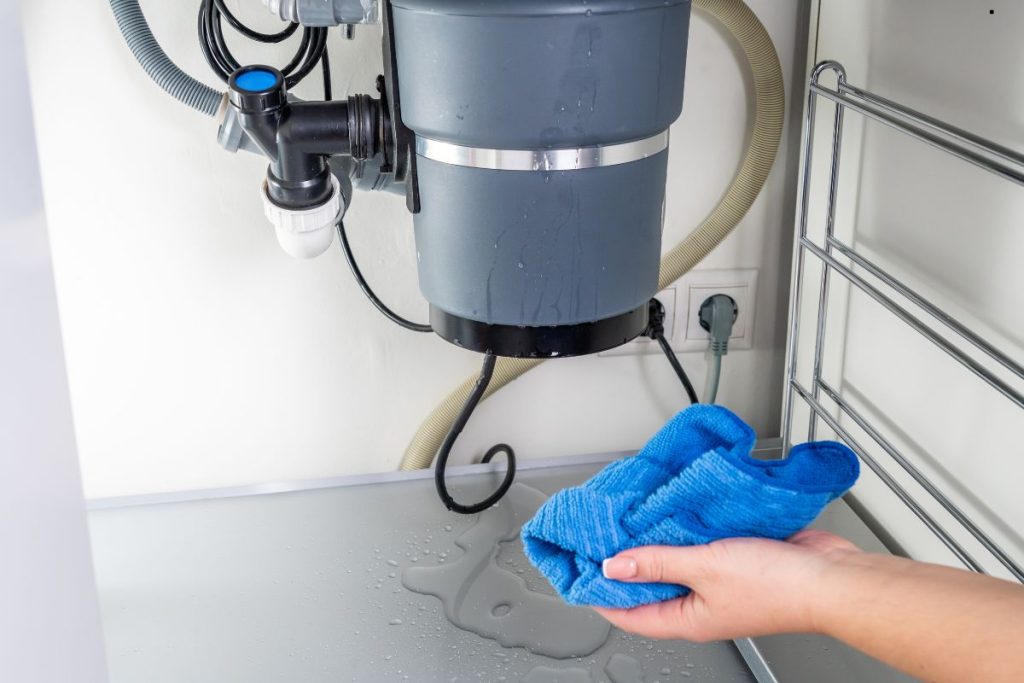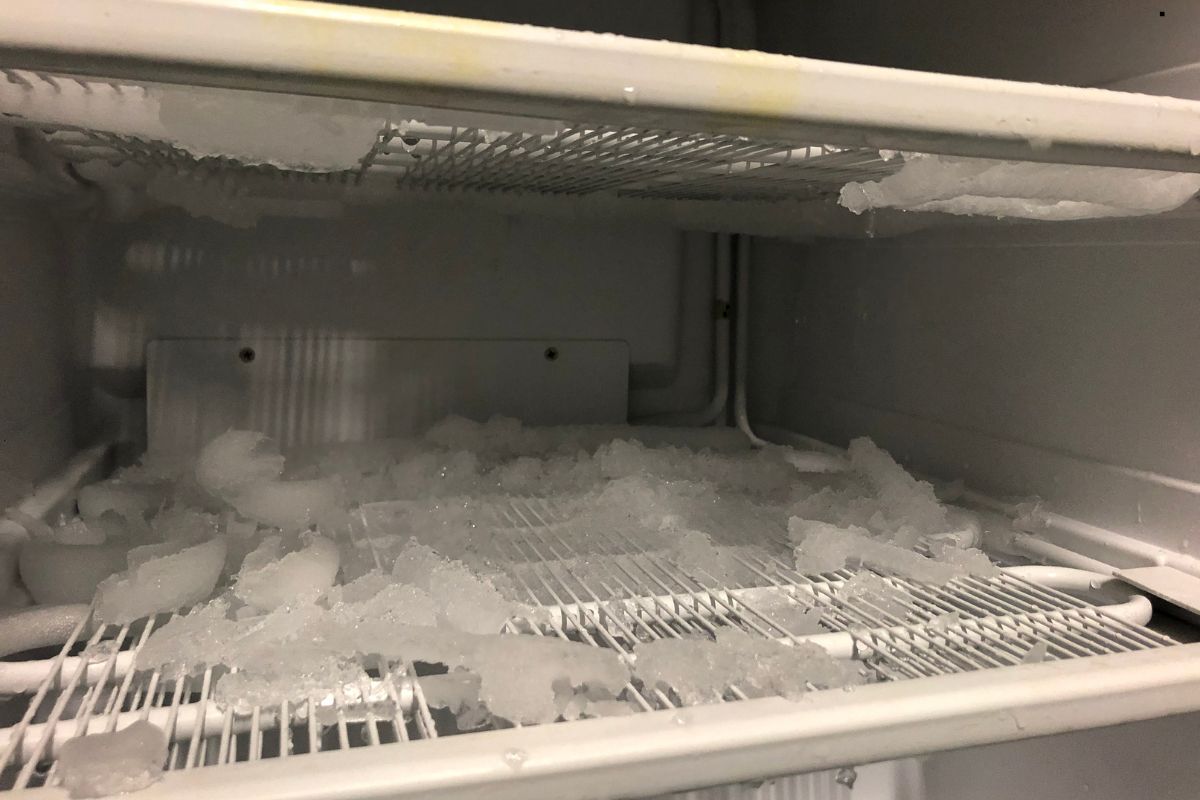
Is your Samsung refrigerator leaving puddles on your kitchen floor? Don’t panic! Leaking refrigerators are a common problem, and with Samsung models, it often boils down to a few key culprits: a clogged defrost drain, a faulty water line, a bad water filter, or a cracked drip pan. In this comprehensive guide, we’ll walk you through the four most likely reasons your Samsung refrigerator is leaking, provide simple DIY solutions.
1. The Case of the Icy Buildup: Defrost Drain Problems

One of the most frequent causes of a Samsung refrigerator leak is a clogged defrost drain.
- Understanding the Defrost System: Your refrigerator’s defrost system prevents ice from building up in the freezer. During the defrost cycle, a small amount of heat melts any accumulated frost. The resulting water flows through a drain, usually located at the back of the freezer, and into a drip pan where it evaporates.
- Identifying a Clogged Drain: Over time, food particles and other debris can clog this drain. When the drain is blocked, the melted ice has nowhere to go and overflows, often pooling at the bottom of the freezer or leaking out onto the floor. Signs of this include ice buildup at the back of the freezer compartment, or water accumulating inside the fridge near the bottom.
A properly functioning defrost system is essential for keeping your refrigerator running efficiently and preventing ice buildup in the freezer. During the defrost cycle, a small amount of heat melts accumulated frost, allowing water to drain through an outlet at the back of the freezer and into a drip pan where it evaporates. However, over time, food particles and debris can clog this drain, causing water to overflow and pool at the bottom of the freezer or leak onto the floor. If you notice excessive ice buildup, water collecting inside your fridge, or leaking onto your kitchen floor, you may have a clogged defrost drain that needs attention. Don’t let a simple issue turn into a bigger problem! Our expert refrigerator repair services can quickly diagnose and fix clogged drains, ensuring your appliance runs smoothly.
DIY Solution: To clear the defrost drain:
- Unplug your refrigerator. (Safety first!)
- Locate the drain: It’s usually a small hole at the back of the freezer, often covered by a plastic panel.
- Melt the Ice: Use a hair dryer on low heat or carefully pour warm water over the ice buildup.
- Flush the Drain: Use a turkey baster or a syringe to flush the drain with warm water. You can also use a flexible wire or pipe cleaner to gently dislodge any debris.
- Repeat until the water drains freely.
To clear a clogged refrigerator drain, use a turkey baster or syringe to flush it with warm water, helping to break down any built-up debris. For stubborn blockages, a flexible wire or pipe cleaner can be gently inserted to dislodge any obstructions. Repeat the process until the water flows freely through the drain, ensuring proper drainage and preventing leaks.Still having issues? Call us today for professional refrigerator repair and maintenance!
2. Is Your Water Line the Culprit? Checking for Leaks
If your Samsung refrigerator has an ice maker or water dispenser, it’s connected to a water supply line. Problems with this line are another common source of leaks.
- Loose Connections & Damage: Check the connection points where the water line connects to the refrigerator and the water supply valve. Look for any signs of looseness, corrosion, or water droplets.
- Kinked or Broken Water Line: Inspect the entire length of the water line for kinks, cracks, or other damage. Kinks can restrict water flow and cause pressure buildup, leading to leaks.
DIY Solution:
- Turn off the water supply to the refrigerator.
- Tighten any loose connections with a wrench.
- Replace damaged water lines with a new one (available at most hardware stores). Ensure the new line is properly connected and secured.
If your Frigidaire refrigerator dispenser isn’t working properly, you’re not alone. It can be frustrating when you need ice or water, but the dispenser won’t cooperate. The good news is that most issues can be resolved without too much trouble. In this guide, we’ll walk you through common problems and troubleshooting steps to get your dispenser back in action—whether it’s an electrical issue, a clogged filter, or something else, we’ve got you covered! Check out our full troubleshooting guide here: Fix Your Frigidaire Dispenser Issues.
3. Filter Problems: Old Filters and Improper Installation

The water filter in your Samsung refrigerator plays a crucial role in providing clean, fresh-tasting water and ice. However, a faulty water filter can also lead to leaks.
- Signs of a Leaky Filter: If you notice water dripping from the filter housing, it could be due to a cracked filter, a loose connection, or an improperly installed filter.
- Replacing Your Water Filter Properly: Old or clogged filters can also cause pressure buildup and leaks. It’s recommended to replace your refrigerator water filter every six months.
DIY Solution:
- Turn off the water supply to the refrigerator.
- Remove the old filter according to the manufacturer’s instructions.
- Inspect the filter housing for any cracks or damage.
- Install a new, genuine Samsung water filter, ensuring it’s properly seated and locked into place.
- Flush the system by dispensing water for several minutes to remove any air bubbles.
To replace your refrigerator’s water filter, start by turning off the water supply to prevent leaks. Carefully remove the old filter following the manufacturer’s instructions, then inspect the filter housing for any cracks or damage. Next, install a new, genuine Samsung water filter, making sure it is properly seated and securely locked into place. Once installed, flush the system by dispensing water for several minutes to remove any trapped air bubbles and ensure clean, fresh water flow. Need assistance with your refrigerator’s water filter replacement? Call us today for expert service!
4. Drip, Drip, Drop: The Drip Pan Dilemma
The drip pan (also called the drain pan) is located beneath the refrigerator and collects water from the defrost cycle. If this pan becomes cracked or damaged, it can leak.
- Locating and Inspecting the Drip Pan: Carefully pull the refrigerator away from the wall (unplugging it first!) and locate the drip pan. Check for any cracks, holes, or signs of overflowing.
- Drip Pan Replacement: If the drip pan is damaged beyond repair, it needs to be replaced.
DIY Solution:
- Remove the old drip pan.
- Purchase a replacement drip pan that is compatible with your Samsung refrigerator model.
- Install the new drip pan in its place.
Troubleshooting Your Leaky Samsung Refrigerator: When to DIY vs. Call a Professional
While some refrigerator leaks can be fixed with simple DIY solutions, there are situations where professional assistance is the best option. If you’ve gone through the troubleshooting steps and your fridge is still leaking, or if you’re unsure about handling electrical components or plumbing, it’s wise to call a qualified appliance repair technician.
Ignoring a leak can lead to serious issues like water damage, mold growth, and increased energy costs. Don’t wait—protect your home and appliance by addressing the problem now! Contact us today for expert repair services.
